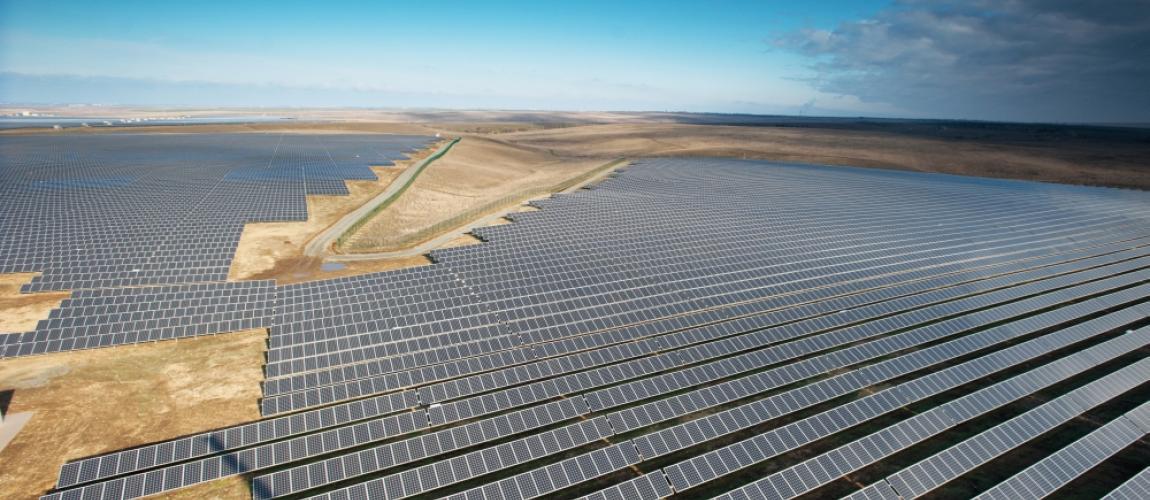Climate-Smart PPPs

Photo Credit: Activ Solar via Creative Commons Flickr, CC BY-SA 2.0
The majority of greenhouse gas (“GHG”) emissions today is associated with carbon-intense infrastructure construction and operation, particularly in the energy, public transport, water supply and sanitation sectors. At the same time, it is expected that economies will need to make significant investments over the next 10 - 15 years to build new or to rehabilitate ageing infrastructure to meet the increasing global demand, emerging economies and developing countries accounting for roughly two thirds of global infrastructure investment. Many risks associated with climate change will be felt hardest by lower income countries, as their ability to prevent and respond to the impacts of climate change is limited. Against this background there is an urgent need for the development and finance of climate-smart infrastructure solutions. Private investment and expertise, including infrastructure finance through public-private partnership (PPP) models is essential for the delivery of climate-smart infrastructure. The application of PPP models presents both challenges and opportunities. Given the massive capital requirements and need for innovation (both in terms of technological solutions and funding structures), PPPs potentially provide a useful framework under which the public and private sectors can pool and coordinate their financial and technological resources more efficiently. At the same time, climate change creates novel forms of risk which are difficult to quantify and will present unique challenges to public and private sector parties seeking to negotiate an appropriate allocation of risk between themselves. Climate-smart infrastructure refers to infrastructure solutions that: Mitigate climate change, e.g., through reduction of GHG emissions and improved energy efficiency; Increase the resilience of infrastructure assets to climate change, i.e., ensure that infrastructure is planned, designed, built and operated in a way that anticipates, prepares for and adapts to uncertain and potentially permanent effects of climate change (e.g. hydropower project that takes into account changes in average and extreme flows in the future, to ensure that financial models that stem from hydrological analyses are correct, or that spillways are correctly sized to avoid dam breaches). This may in turn generate significant cost savings and efficiency gains for the wider community by avoiding or reducing potentially costly rectifications and replacements of infrastructure later down the track; and Ensure resilience through infrastructure, i.e., ensure that the new or improved infrastructure does not harm and delivers related benefits to wider systems, communities, households and individuals (e.g., sea barriers, flood protection). The distinction between resilience of projects and resilience through projects is explained in more detail as follows: World Bank Group’s Action Plan on Climate Change Adaptation and Resilience, World Bank Group Climate Resilience Principles – A framework for assessing climate resilience Investments, Climate Bonds Initiative September 2019 This section of the Public-Private Partnership Resource Center website provides links to policies, legislation, project documents and other resources that are relevant for developing, structuring and implementing climate-smart PPP projects: Terms and Concepts: Adaptation of climate change constitutes “The process of adjustment to actual or expected climate and its effects. In human systems, adaptation seeks to moderate or avoid harm or exploit beneficial opportunities. In some natural systems, human intervention may facilitate adjustment to expected climate and its effects.” Mitigation of climate change constitutes “a human intervention to reduce the sources or enhance the sinks of greenhouse gases (GHGs)”. Resilience is “the capacity of social, economic and environmental systems to cope with a hazardous event or trend or disturbance, responding or reorganizing in ways that maintain their essential function, identity and structure, while also maintaining the capacity for adaptation, learning and transformation.” The definitions above are based on Synthesis Report, Contribution of Working Groups I, II and III to the Fifth Assessment Report of the Intergovernmental Panel on Climate Change, Annex II: Glossary in Climate Change, IPCC, 2014. Climate-resilient infrastructure: Infrastructure that is planned, designed, built and operated in a way that anticipates, prepares for, and adapts to changing climate conditions. It can also withstand, respond to, and recover rapidly from disruptions caused by these climate conditions.
Responses developed to climate change globally including the climate change regime that may apply for PPPs are changing dynamically and quickly. Many aspects highlighted throughout this section, including best practice legal and regulatory frameworks, Nationally Determined Contributions (NDCs), design standards, insurance and insurability, force majeure definitions will change continuously. Being on top of the latest developments regarding this topic is decisive for successful PPPs. The goal of the Public-Private Partnership Resource Center is to keep the information on this website timely and accurate. If you have any comments, please write to us at: ppp@worldbank.org.
Related Content
Additional Resources
Sub-national and Municipal PPPs
Type of ResourcePublic-Private Partnerships for Transport
Energy and Power PPPs
Type of ResourceLeveraging PPPs to tackle climate change – A new resource
Type of Resource
Partner Resources

Renewable Energy Project Resource Centre (REPRC)
Wiki-based library of energy project resources. Includes sample terms of references, procurement documents, economic analyses and case studies (success factors and lessons learned).